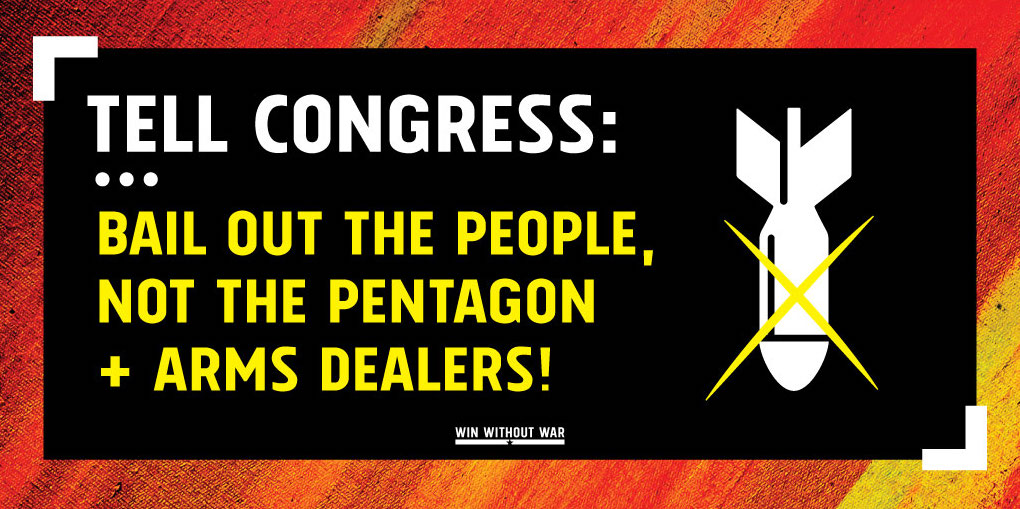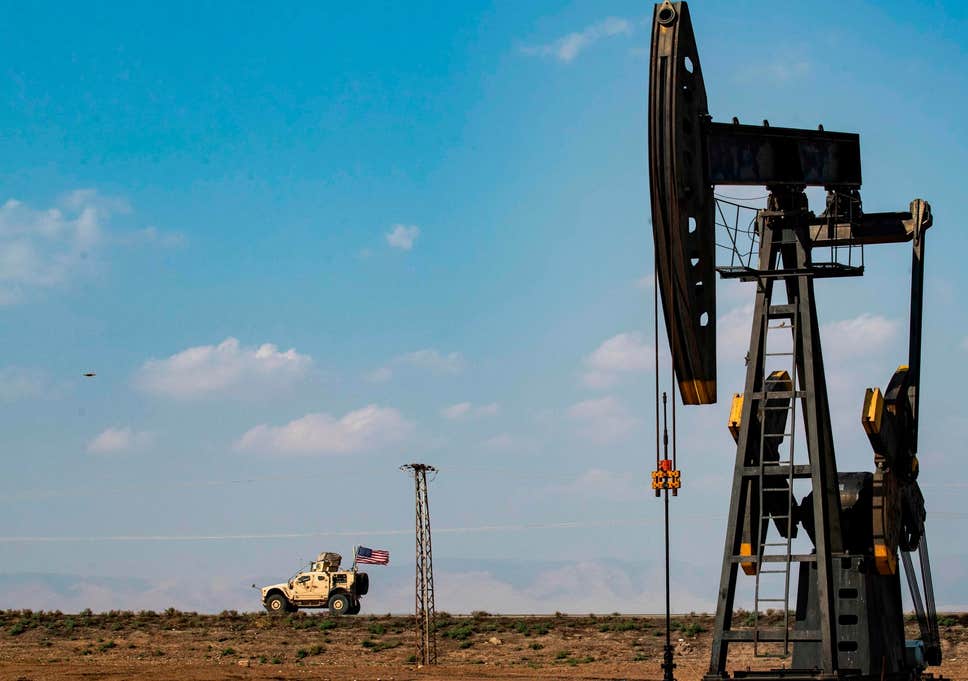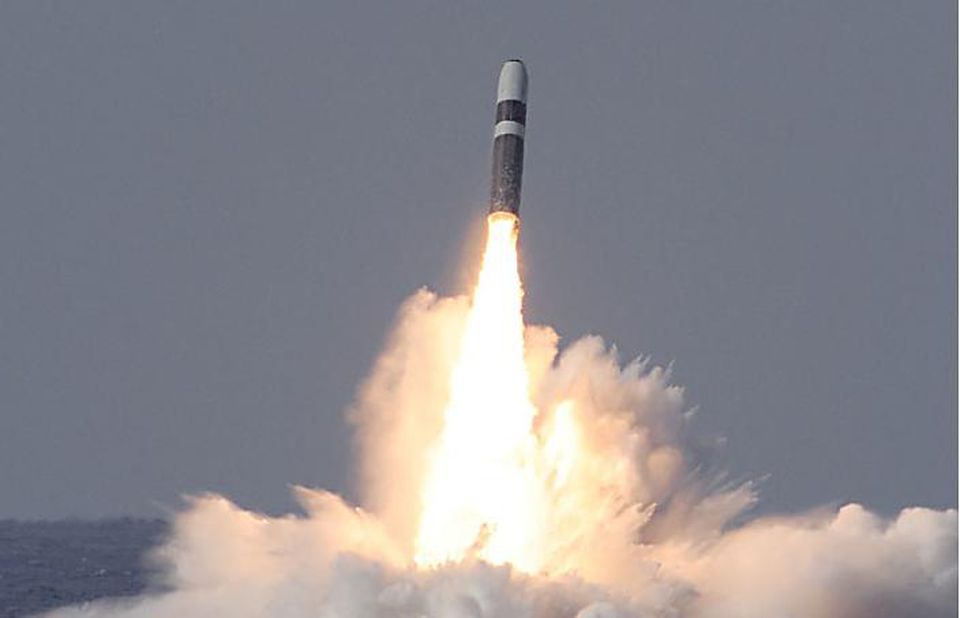Energy analysts have long assumed that, given time, growing international concern over climate change would result in a vast restructuring of the global energy enterprise. The result: a greener, less climate-degrading system. In this future, fossil fuels would be overtaken by renewables, while oil, gas, and coal would be relegated to an increasingly marginal role in the global energy equation. In its World Energy Outlook 2019, for example, the International Energy Agency (IEA) predicted that, by 2040, renewables would finally supersede petroleum as the planet’s number one source of energy and coal would largely disappear from the fuel mix. As a result of Covid-19, however, we may no longer have to wait another 20 years for such a cosmic transition to occur — it’s happening right now.
So take a breath and, amid all the bad news pouring in about a deadly global pandemic, consider this: when it comes to energy, what was expected to take at least two decades in the IEA’s most optimistic scenario may now occur in just a few years. It turns out that the impact of Covid-19 is reshaping the world energy equation, along with so much else, in unexpected ways.
That energy would be strongly affected by the pandemic should come as no surprise. After all, fuel use is closely aligned with economic activity and Covid-19 has shut down much of the world economy. With factories, offices, and other businesses closed or barely functioning, there’s naturally less demand for energy of all types. But the impacts of the pandemic go far beyond that, as our principal coping mechanisms — social distancing and stay-at-home requirements — have particular implications for energy consumption.
Among the first and most dramatic of these has been a shockingly deep decline in flying, automobile commuting, and leisure travel — activities that account for a large share of daily petroleum use. Airline travel in the United States, for example, is
down by 95% from a year ago. At the same time, the personal consumption of electricity for telework, distance learning, group conversations, and entertainment has soared. In hard-hit Italy, for instance, Microsoft
reports that the use of its cloud services for team meetings — a voracious consumer of electricity — has increased by 775%.
These are all meant to be temporary responses to the pandemic. As government officials and their scientific advisers begin to talk about returning to some semblance of “normalcy,” however, it’s becoming increasingly clear that many such pandemic-related practices will persist in some fashion for a long time to come and, in some cases, may prove permanent. Social distancing is likely to remain the norm in public spaces for many months, if not years, curtailing attendance at theme parks and
major sports events that also typically involve lots of driving. Many of us are also becoming more accustomed to working from home and may be in no rush to resume a harried 30-, 60-, or 90-minute commute to work each day. Some colleges and universities, already under financial pressure of various sorts, may
abandon in-person classes for many subjects and rely far more on distance learning.
No matter how this pandemic finally plays out, the post-Covid-19 world is bound to have a very different look from the pre-pandemic one and energy use is likely to be among the areas most affected by the transformations underway. It would be distinctly premature to make sweeping predictions about the energy profile of a post-coronavirus planet, but one thing certainly seems possible: the grand transition, crucial for averting the worst outcomes of climate change and originally projected to occur decades from now, could end up happening significantly more swiftly, even if at the price of widespread bankruptcies and prolonged unemployment for millions.
Oil’s Dominance in Jeopardy
As 2019 drew to a close, most energy analysts assumed that petroleum would continue to dominate the global landscape through the 2020s, as it had in recent decades, resulting in ever greater amounts of carbon emissions being sent into the atmosphere. For example, in its
International Energy Outlook 2019, the Energy Information Administration (EIA) of the U.S. Department of Energy
projected that global petroleum use in 2020 would amount to 102.2 million barrels per day. That would be up 1.1 million barrels from 2019 and represent the second year in a row in which global consumption would have exceeded the notable threshold of 100 million barrels per day. Grimly enough, the EIA further projected that world demand would continue to climb, reaching 104 million barrels per day by 2025 and 106 million barrels in 2030.
In arriving at such projections, energy analysts assumed that the factors responsible for driving petroleum use upward in recent years would persist well into the future: growing automobile ownership in China, India, and other developing nations; ever-increasing commutes as soaring real-estate prices forced people to live ever farther from city centers; and an exponential increase in airline travel, especially in Asia. Such factors, it was widely assumed, would more than compensate for any drop in demand caused by a greater preference for electric cars in Europe and a few other places. As
suggested by oil giant BP in its
Energy Outlook for 2019, “All of the demand growth comes from developing economies, driven by the burgeoning middle class in developing Asian economies.”
Even in January, as the coronavirus began to spread from China to other countries, energy analysts imagined little change in such predictions. Reporting “continued strong momentum” in oil use among the major developing economies, the IEA typically
reaffirmed its belief that global consumption would grow by more than one million barrels daily in 2020.
Only now has that agency begun to change its tune. In its most recent
Oil Market Report, it
projected that global petroleum consumption in April would fall by an astonishing 29 million barrels per day compared to the same month the previous year. That drop, by the way, is the equivalent of total 2019 oil usage by the United States, Canada, and Mexico. Still, the IEA analysts assumed that all of this would just be a passing phenomenon. In that same report, it also predicted that global economic activity would rebound in the second half of this year and, by December, oil usage would already be within a few million barrels of pre-coronavirus consumption levels.
Other indicators, however, suggest that such rosy predictions will prove highly fanciful. The likelihood that oil consumption will approach 2018 or 2019 levels by year’s end or even in early 2021 now appears remarkably unrealistic. It is, in fact, doubtful that those earlier projections about sustained future growth in the demand for oil will ever materialize.
A Shattered World Economy
As a start, a return to pre-Covid-19 consumption levels assumes a reasonably rapid restoration of the world economy as it was, with Asia taking the lead. At this moment, however, there’s no evidence that such an outcome is likely.
In its April
World Economic Outlook report, the International Monetary Fund
predicted that global economic output would fall by 3% in 2020 (which may prove a distinct underestimate) and that the pandemic’s harsh impacts, including widespread unemployment and business failures, will persist well into 2021 or beyond. All told, it suggested, the cumulative loss to global gross domestic product in 2020 and 2021, thanks to the pandemic, will amount to some $9 trillion, a sum greater than the economies of Japan and Germany combined (and that assumes the coronavirus will not come back yet more fiercely in late 2020 or 2021, as the “
Spanish Flu” did in 1918).
This and other recent data suggest that any notion China, India, and other developing nations will soon resume their upward oil-consumption trajectory and save the global petroleum industry appears wildly far-fetched. Indeed, on April 17th, China’s National Bureau of Statistics
reported that the country’s GDP shrank by 6.8% in the first three months of 2020, the first such decline in 40 years and a staggering blow to that country’s growth model. Even though government officials are slowly opening factories and other key businesses again, most observers
believe that spurring significant growth will prove exceedingly difficult given that Chinese consumers, traumatized by the pandemic and accompanying lockdown measures, seem loath to make new purchases or engage in travel, tourism, and the like.
And keep in mind that a slowdown in China will have staggering consequences for the economies of numerous other developing nations that rely on that country’s tourism or its imports of their oil, copper, iron ore, and other raw materials. China, after all, is the leading destination for the exports of many Asian, African, and Latin American countries. With Chinese factories closed or operating at a reduced tempo, the demand for their products has already plummeted, causing widespread economic hardship for their populations.
Add all this up, along with a rising tide of unemployment in the United States and elsewhere, and it would appear that the possibility of global oil consumption returning to pre-pandemic levels any time soon — or even at all — is modest at best. Indeed, the major oil-exporting nations have evidently reached this conclusion on their own, as demonstrated by the extraordinary April 12th
agreement that the Saudis, the Russians, and other major exporting countries reached to cut global production by nearly 10 million barrels per day. It was a desperate bid to bolster oil prices, which had fallen by
more than 50% since the beginning of the year. And keep in mind that even this reduction — unprecedented in scale — is
unlikely to prevent a further decline in those prices, as oil purchases continue to fall and fall again.
Doing Things Differently
Energy analysts are likely to argue that, while the downturn will undoubtedly last longer than the IEA’s optimistic forecast, sooner or later petroleum use will return to its earlier patterns, once again cresting at the 100-million-barrels-per-day level. But this appears highly unlikely, given the way the pandemic is reshaping the global economy and everyday human behavior.
After all, IEA and oil-industry forecasts assume a fully interconnected world in which the sort of dynamic growth we’ve come to expect from Asia in the twenty-first century will sooner or later fuel economic vigor globally. Extended supply lines will once again carry raw materials and other inputs to China’s factories, while Chinese parts and finished products will be transported to markets on every continent. But whether or not that country’s economy starts to grow again, such a globalized economic model is unlikely to remain the prevailing one in the post-pandemic era. Many countries and companies are, in fact, beginning to restructure their supply lines to avoid a full-scale reliance on foreign suppliers by seeking alternatives closer to home — a trend likely to persist after pandemic-related restrictions are lifted (especially in a world in which Trumpian-style “nationalism” still seems to be on the rise).
“There will be a rethink of how much any country wants to be reliant on any other country,”
suggests the aptly named Elizabeth Economy, a senior fellow at the Council on Foreign Relations. “I don’t think fundamentally this is the end of globalization. But this does accelerate the type of thinking that has been going on in the Trump administration, that there are critical technologies, critical resources, reserve manufacturing capacity that we want here in the U.S. in case of crisis.”
Other countries are bound to begin planning along similar lines, leading to a significant decline in transcontinental commerce. Local and regional trade will, of course, have to increase to make up for this decline, but the net impact on petroleum demand is likely to be negative as long-distance trade and travel diminishes. For China and other rising Asian powers, this could also mean a slower growth rate, squeezing those “burgeoning middle classes” that were, in turn, expected to be the major local drivers (quite literally, in the case of the car cultures in those countries) of petroleum consumption.
A Shift toward Electricity — and a Greater Reliance on Renewables
Another trend the coronavirus is likely to accelerate: greater reliance on telework by corporations, governments, universities, and other institutions. Even before the pandemic broke out, many companies and organizations were beginning to rely more on teleconferencing and work-from-home operations to reduce travel costs, commuting headaches, and even, in some cases, greenhouse gas emissions. In our new world, the use of these techniques is likely to become far more common.
“The COVID-19 pandemic is, among other things, a massive experiment in telecommuting,”
observed Katherine Guyot and Isabel Sawhill of the Brookings Institution in a recent report. “Up to half of American workers are currently working from home, more than double the fraction who worked from home (at least occasionally) in 2017-2018.”
Many such workers, they also noted, had been largely unfamiliar with telecommuting technology when this grand experiment began, but have quickly mastered the necessary skills. Given little choice in the matter, high school and college students are also becoming more adept at telework as their schools shift to remote learning. Meanwhile, companies and colleges are investing massively in the necessary hardware and software for such communications and teaching. As a result, Guyot and Sawhill suggest, “The outbreak is accelerating the trend toward telecommuting, possibly for the long term.”
Any large increase in teleworking is bound to have a dramatic dual impact on energy use: people will drive less, reducing their oil consumption, while relying more on teleconferencing and cloud computing, and so increasing their use of electricity. “The coronavirus reminds us that electricity is more indispensable than ever,”
says Fatih Birol, executive director of the IEA. “Millions of people are now confined to their homes, resorting to teleworking to do their jobs.”
Increased reliance on electricity, in turn, will have a significant impact on the very nature of primary fuel consumption, as coal begins to lose its dominant role in the generation of electrical power and is replaced at an ever-excellerating pace by renewables. In 2018, according to the IEA’s World Energy Outlook 2019, a distressing 38% of world electricity generation was still provided by coal, another 26% by oil and natural gas, and only 26% by renewables; the remaining 10% came from nuclear and other sources of energy. This was expected to change dramatically over time as climate-conscious policies began to have a significant impact — but, even in the IEA’s most hopeful scenarios, it was only after 2030 that renewables would reach the 50% level in electricity generation. With Covid-19, however, that process is now likely to speed up, as power utilities adjust to the global economic slowdown and seek to minimize their costs.
With many businesses shut down, net electricity use in the United States has
actually declined somewhat in these months — although not nearly as much as the drop in petroleum use, given the way home electricity consumption has compensated for a plunge in business demand. As utilities adapt to this challenging environment, they are finding that wind and solar power are often the least costly sources of primary energy, with natural gas just behind them and coal the most expensive of all. Insofar as they are investing in the future, then, they appear to be
favoring large solar and wind projects, which can, in fact, be brought online relatively quickly, assuring needed revenue. New natural gas plants take longer to install and coal offers no advantages whatsoever.
In the depths of global disaster, it’s way too early to make detailed predictions about the energy landscape of future decades. Nonetheless, it does appear that the present still-raging pandemic is forcing
dramatic shifts in the way we consume energy and that many of these changes are likely to persist in some fashion long after the virus has been tamed. Given the
already extreme nature of the
heating of this planet, such shifts are likely to prove catastrophic for the oil and coal industries but beneficial for the environment — and so for the rest of us. Deadly, disruptive, and economically devastating as Covid-19 has proved to be, in retrospect it may turn out to have had at least this one silver lining.
Copyright 2020 Michael Klare






 s the coronavirus continues to spread, and the United States climbs closer to 1 million cases and nearly 60,000 deaths, we face an unprecedented economic and health care crisis that demands an unprecedented response. While we work toward an economic solution that keeps people on the payroll, Washington is also in the midst of a crucial argument over how to help cover the costs of testing, treatment and all other essential care for the millions of people who are now uninsured or soon will be as the country faces record levels of job loss.
s the coronavirus continues to spread, and the United States climbs closer to 1 million cases and nearly 60,000 deaths, we face an unprecedented economic and health care crisis that demands an unprecedented response. While we work toward an economic solution that keeps people on the payroll, Washington is also in the midst of a crucial argument over how to help cover the costs of testing, treatment and all other essential care for the millions of people who are now uninsured or soon will be as the country faces record levels of job loss. 






